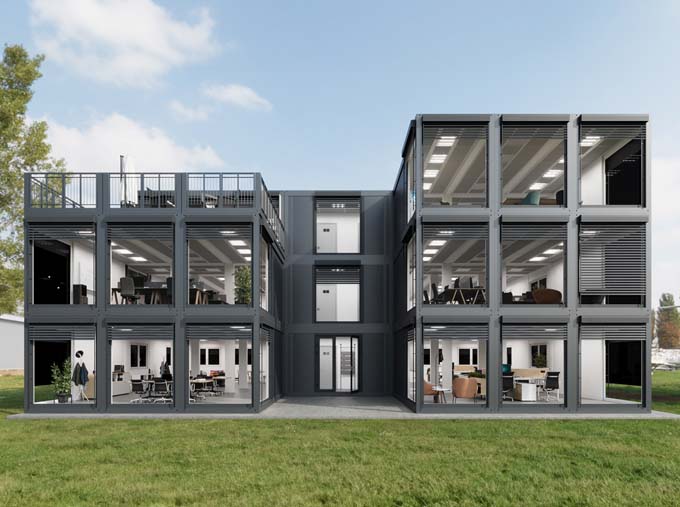Energy strategy 2050: only on course for the short term
The short-term benchmarks for the expansion of renewable energies and the improvement of energy efficiency in Switzerland up to 2020 are within reach or have already been achieved. This is shown by the published third monitoring report of the Swiss Federal Office of Energy (SFOE). In the long term, however, major challenges remain for the implementation and further development of the Energy Strategy 2050.

The current Energy Act sets benchmarks for the years 2020 and 2035 for the expansion of renewable energies and hydropower and for the reduction of energy and electricity consumption. The monitoring of the Energy Strategy 2050 observes their development and many other topics and indicators. The third annual report published today Monitoring report 2020 shows the situation as of the end of 2019. The impact of the Covid19 pandemic on the energy sector is therefore not yet included, with a few exceptions.
Electricity production from renewable energies (excluding hydropower)
The has been increasing since 2000, and since 2010 the growth has intensified. In 2019, renewable electricity production was 4,186 gigawatt hours (GWh), or 6.2% of total net electricity production. The 2020 benchmark is 4,400 GWh. An increase of 3,000 GWh is targeted between the base year of 2010 and 2020. Of this, nearly 93% had already been achieved by 2019. The guideline value for 2020 is thus within reach. The benchmark for 2035 is 11,400 GWh. To achieve this, the annual net increase would have to average around 451 GWh, i.e. more than at present.
Electricity production from hydropower
In 2019, the average net production expectation from hydropower was 36,137 GWh. The guideline value in 2035 is 37,400 GWh. The base year here is 2011, and a net increase of about 2,000 GWh is targeted by 2035 (no 2020 benchmark in the law). Of this, about 38% were reached in 2019. In order to reach the guideline value in 2035, a net increase of 79 GWh per year on average is required in the coming years, which is roughly in the order of magnitude of the growth to date.
Final energy consumption per capita
It has decreased since 2000. In 2019, it was 19.1% below the base year 2000; adjusted for weather, the decrease is 18.1%. Thus, the 2020 benchmark (-16%) has already been reached. To reach the 2035 benchmark (-43%), weather-adjusted final energy consumption per capita will have to decrease by an average of 2.2% per year in the future. This is more than the average decrease over the last 10 years (-1.4%).
Electricity consumption per capita
This increased until 2006, since then the trend has been downward. In 2019, it was 8.3% below the 2000 value, weather-adjusted the decrease was 8.0%. Again, the 2020 benchmark (-3%) has already been reached. To reach the 2035 benchmark (-13%), weather-adjusted per capita electricity consumption must decrease by an average of 0.4% per year in the future. This is less than the average decrease over the last 10 years (-1.0%).
PV systems in self-consumption and smart grid components
This year, for the first time, the monitoring also shows indicators for photovoltaic (PV) systems, where the system operators consume part of the electricity produced themselves. Self-consumption is an important driver for the expansion and decentralization of electricity supply. So-called associations for self-consumption (ZEV) of neighboring plant operators and end consumers have a particularly high potential in this respect.
The data is based on a survey of Swiss electricity distribution system operators. According to provisional data including ZEV, there were a total of 76,919 PV systems in self-consumption at the end of 2019 (this is around 78% of all PV systems). Their installed capacity totaled 1,278 megawatts (MW). They fed a total of 746,724 megawatt hours (MWh) of electricity into the distribution grid. Around 3080 of the plants were integrated into ZEV. With their installed capacity of around 124 MW, they fed a total of around 51,000 MWh of electricity into the distribution grid.
The calculated self-consumption of PV systems (individual systems and ZEV) was around 0.48 billion kilowatt hours in 2019. This is about 0.8% of Switzerland's total electricity consumption of 57.2 billion kWh in 2019. The average self-consumption rate of PV systems was about 39%. This is how much was thus consumed directly on site in total, with the remainder being fed into the distribution grid.
Growing decentralized power generation poses challenges for power grids. Intelligent networks (smart grids) help to solve these. A central component of such grids are intelligent electricity meters (smart meters). In 2019, according to the distribution network operators, around 944,220 smart meters were installed and operated as such throughout Switzerland. That is a share of just under 17%. According to the Electricity Supply Ordinance, 80% of all measuring devices must be smart meters by 2027.
44 indicators in 7 topics
The detailed monitoring report contains a total of 44 indicators as well as descriptive sections in seven thematic areas: Energy Consumption and Production, Grid Development, Security of Supply, Expenditures and Prices, Energy-Related CO2 Emissions, Research and Technology, and International. The most important indicators are also available in an abridged version. Both reports are available on the Internet (www.energiemonitoring.ch). Every five years, the Federal Council also submits a report to parliament. This report includes in-depth studies and a status report on energy policy.
Press release Federal Office of Energy









